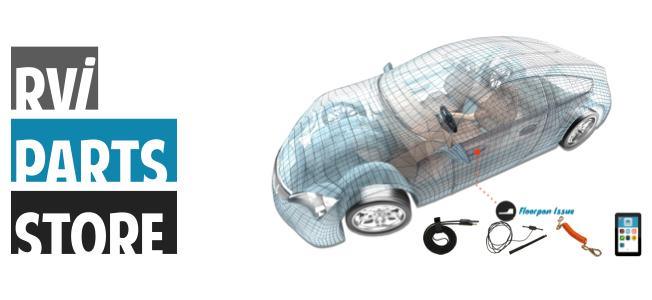Last week, we touched on RV towing capacities in our Ultimate Guide To Towing A Jeep Wrangler JL. This week, we want to expand on that a little. Even though motorhomes are much larger than traditional towing vehicles, they still have restrictions when it comes to tow weight. Certain RVs will limit you more than others. Without further ado, let’s take a look at the details.
CLASSES (TYPES) OF RVs
There are three primary classes of RVs/motorhomes: Class A, Class B, Class C. Contrary to what may seem obvious or sensible, these Classes do not progressively increase or decrease in size and weight restrictions. Nevertheless, you’ve likely seen all three Classes on the road before.
Class A RVs are the largest of the group. These motorhomes have a bus-style profile and can be further segmented into two categories: Gas-powered or Diesel Pusher. A Diesel Pusher, as its name implies, is diesel-fueled and has its engine components located in the rear - hence the “pusher” part of the name. A gas-powered Class A functions more like a traditional vehicle, with a gas engine in the front. Both styles have their pros and cons, but most folks who go with a Class A opt for the Diesel Pusher variant, as it provides a number of unique benefits - one of the most important being fuel economy. While diesel fuel is more expensive, the tank on a Diesel Pusher is larger and diesel fuel itself is more efficient, meaning less stops to refuel than with a gas engine. You also have increased power with a diesel motor.
How does that power translate to towing capacity?
It actually makes a very significant impact. As we mentioned last week, a Class A Diesel Pusher can venture north of 10,000 lbs. when it comes to towing capacity. A gas-powered Class A, however, can only pull about half that - around 5,000 lbs. Again, it’s not hard to see why the Diesel Pusher models are more popular, especially in the flat towing community.
Class B RVs are the smallest type of RV. Motorhomes in this Class are much closer to large passenger vans than the rest of their RV brethren (in fact, RVs in this Class are sometimes referred to as Camper Vans). Examples of Class B RVs would be the Winnebago Travato and the Entegra Coach (this isn’t an endorsement of either one, just examples).
Flat towing with RVs in this Class is, quite frankly, not very realistic - which is why you typically won’t see that setup on the road. Class B RVs have a max towing capacity between 3,000-5,000 lbs. For reference, a Smart Car is a little under 3,000 lbs. and a Toyota Corolla is right at 3,000 lbs. almost exactly. Now, if you have a larger Class B that has a capacity closer to that 5,000 lb. mark, you do open yourself up to a few other options - but you’re still going to be extremely limited. As such, it’s best to skip a Class B if you’re planning to flat tow (though Class Bs are great for bringing ATVs or motorcycles along with you).
Class C RVs are somewhere between a van and a bus. They typically have a truck-style cab and are powered via either a Ford E-series chassis or a Mercedes Sprinter chassis. Here again, as with Class As, we do have diesel or gas variants, with the pros and cons being very much the same. This Class has the highest amount of variation when it comes to towing capacity - the lightest ones top out around the Class B limit of 3,000 lbs., while heavier models can go all the way up to 8,000. The 5,000-8,000 lb. capacity range is going to give you the most versatility when it comes to towed vehicles, so, if you’re looking at purchasing a Class C, be sure to look at models in this range.
All in all, Class A motorhomes are often the go-to for flat towing, since they offer the fewest number of restrictions when it comes to towing capacity, though there are many Class C models that are great as well. Avoid Class Bs and smaller Class Cs if you’re planning on flat towing extensively.
EXAMPLES OF TOWABLE VEHICLES FOR EACH CLASS
Classes A & C:
- Jeep Wrangler
- Jeep Gladiator
- Jeep Cherokee/Grand Cherokee (Yes, there is a Jeep theme here.)
- Ford Escape Hybrid
- Ford F-150
- Honda CRV
(You’re very limited here, but there are a few options.)
- Smart Car
- Chevy Spark
- Fiat 500
- Nissan Versa
As always, you're going to need a braking system for whatever towed setup you choose - it's legally required in almost every case and it's a critical safety feature even in cases where it's not mandated. We'd encourage checking out the RVibrake3 and RVibrake Shadow when you get to that point in your RVing journey.
CONCLUSION
Towing capacities can get a bit obtuse - it’s certainly not the most exciting part of flat towing. However, it is critical information to know when deciding on both the type of RV and the type of towed vehicle you want to purchase. If you’ve got questions on this article, feel free to let us know! Our Customer Service Champions will be happy to help. In the meantime, happy RVing!








Leave a comment